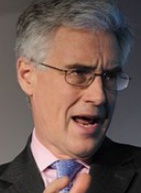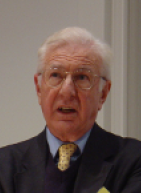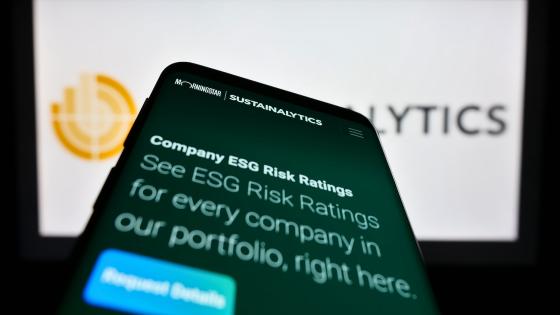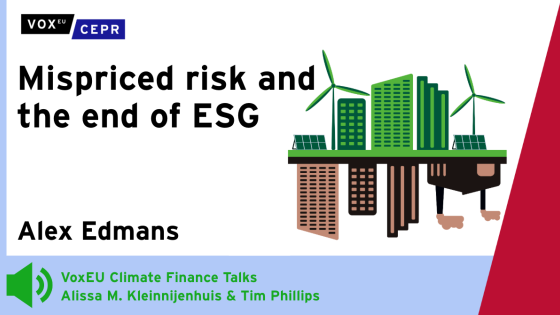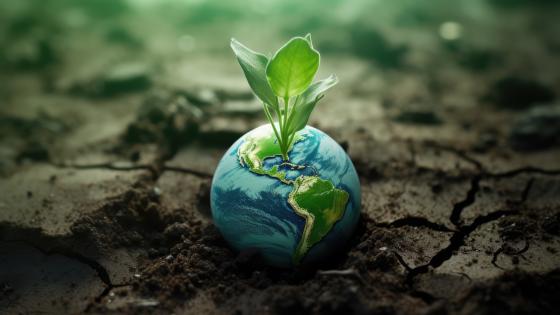One thing would be enough to bring a halt to climate change. If clean energy became cheaper to produce than energy from fossil fuels, the use of fossil fuels would stop. So the key to the problem of climate change is research, development and demonstration (RD&D) to reduce the cost of clean energy.1
The challenge
This has to be a top priority for the world’s scientists and technologists. Time is very short. Once the world’s temperature exceeds 2˚C above the pre-industrial level, major dangers threaten. For example, an eventual sea-level rise of 6 metres becomes very likely. Basic principles of insurance tell us to avoid these perils. So world leaders agreed in 2010 to limit the probable rise in temperature to 2˚C.
Figure 1 shows the challenge. The forecast line is the forecast of the International Energy Agency (IEA) on present policies, and the required path is what is required to stay within 2˚C (IEA 2013a). We must hope that in the COP negotiations culminating in Paris in December the nations will collectively commit to such a path. But how will the nations be able to deliver their commitments?
A key requirement is that clean energy becomes cheaper to produce, and cheap enough to outcompete dirty energy (even without the help of subsidies and taxes). To reduce costs in this way requires a major, concerted effort of RD&D – as we argue in our recently released paper, A Global Apollo Programme to tackle climate change (King et al. 2015).
Figure 1 Energy-related CO2 emissions

The present research effort
So how are we doing? Not well enough. Costs are coming down but not fast enough to solve the problem in time.
Believe it or not, only 2% of the world’s publicly financed RD&D goes on solving the problem of cheap clean energy. This includes all research not only on wind and solar power generation, but also on electricity storage and transmission and on electric vehicles. On these massive issues the world spends only $6 billion a year. As both the IPCC and IEA have pointed out, it is a shocking shortfall (IPCC 2014, IEA 2015).
In the past when threatened, nations of the world have mounted major public sector research initiatives like the Manhattan Project or the Apollo Programme. And the science community has delivered what was needed. But to solve our present problem we are mainly relying on the private sector.
We are subsidising the supply of clean energy to the tune of $100 billion a year (IEA 2013b). While this is right, it has failed to stimulate sufficient cost reductions to solve the problem within the time available. There is just not enough research. Even in the major international companies which manufacture solar PV and wind turbines, the ratio of R&D to sales is under 2%, compared with over 5% in consumer electronics and 15% in pharmaceuticals (Laleman and Albrecht 2012, Grubb et al. 2014).
So we need a totally different and complementary approach where the public sector complements the private sector with a major programme covering the pre-competitive phases of research.
Technology
There are four main major technological challenges. First, sun and wind power generation costs must come down. Recent years have seen striking falls in the cost of photo-voltaic solar panels (as Figure 2 shows).2 This is not surprising since they consist of semi-conductors. But further falls are crucial, as well as a reduced cost of the remaining ‘balance of systems’.
In many sunny areas solar, and in many windy areas wind, are now competitive when they are in use. But for sun and wind to be able to provide base-load 24-hour electricity, we need cheap methods of storing electricity and better ways of feeding intermittent electricity into the grid (using smart grids and better interconnectors). And, to further cut CO2 emissions, we need to be able to electrify all land transport, which means cheaper mobile storage of electricity.
Figure 2 How the price of silicon PV modules has fallen as installed capacity has risen

These are scientific challenges. Scientists and businessmen like our co-authors David King, Martin Rees and John Browne, believe we know enough already to see how, with a concerted research effort, these challenges could be met within a ten-year timetable. They are problems – like putting a man on the moon – that can be cracked if the effort is properly organised and financed. Hence the proposal for a ten-year Global Apollo Programme involving as many of the world’s nations as possible.
Target
The target is that within ten years, base-load new-build renewables should be less costly sources of electricity than new-build coal-fired power stations worldwide.
Scale
At current prices, the moonshot cost $15 billion a year for ten years. That amounts to 0.02% of today’s world GDP and provides an appropriate minimum scale for the Global Apollo Programme (GAP). So any government joining the Programme consortium will pledge to spend an annual average of 0.02% of GDP as public expenditure on the Programme from 2016 to 2025. The money will be spent according to the country’s own discretion. We hope all major countries will join. This is an enhanced, expanded and internationally coordinated version of many national programmes.
Roadmap Committee
The Programme will generate year by year a clear roadmap of the scientific breakthroughs required at each stage to maintain the pace of cost reduction, along the lines of Moore’s Law. Such an arrangement has worked extremely well in the semi-conductor field, where since the 1990s the International Technology Roadmap for Semiconductors (ITRS) has identified the scientific bottlenecks to further cost reduction and has spelt out the advances needed at the pre-competitive stages of RD&D. That Roadmap has been constructed through a consortium of major players in the industry in many countries, guided by a committee of 2-4 representatives of each main region. The RD&D needed has then been financed by governments and the private sector.
The Global Apollo Programme will follow this model. There will be a Commission consisting of one representative of each member country and, under it, a Roadmap Committee of some 20 senior technologists and businessmen who will construct and revise the roadmap year by year. It will be co-located with the International Energy Agency in Paris, but will of course include very many countries not belonging to the IEA. All results discovered through the programme will be made publicly available, though patentable intellectual property will be protected and will remain with those who made the discoveries.
Conclusion
To reduce greenhouse gas emissions much else is also needed – more energy efficiency, more nuclear power and taxes on carbon until fossil fuels finally disappear from use. But we believe strongly that, in terms of value for money, a Global Apollo Programme is an essential component of any serious attempt to manage the risks of climate change. Without it, targets of emission reduction will be extremely difficult to deliver. But the Global Apollo Programme, at relatively small cost, will contribute powerfully to a safer and better world. It will add to energy security and reduce the polluting effects of fossil fuels, which now kill millions of people. It may even generate sufficient savings in energy costs to completely cover its own cost. We hope that by the end of the year all major countries will have decided to join.
Editor’s Note: This article is based on A Global Apollo Programme to tackle climate change, by David King, John Browne, Richard Layard, Gus O’Donnell, Martin Rees, Nicholas Stern and Adair Turner, which is published today (available at www.globalapolloprogramme.org). A related proposal is being discussed at the G7 meeting of heads of government on 7-8 June.
References
Grubb, M, with J-C Hourcade and K Neuhoff (2014), Planetary Economics: Energy, climate change and the three domains of sustainable development, Oxford: Earthscan, p.321.
IEA (2013a) World Energy Outlook Special Report: Redrawing the Energy-Climate Map, New Policies Scenario, Paris: OECD/IEA, Figure 1.16, p.34.
IEA (2013b), World Energy Outlook 2013, Paris: OECD/IEA, p. 95.
IEA (2015), Energy Technology Perspectives, Paris: OECD/IEA.
IPCC (2014), WGIII AR5.
King, D, J Browne, R Layard, G O’Donnell, M Rees, N Stern and A Turner (2015), A Global Apollo Programme to tackle climate change.
Laleman, R and J Albrecht (2012), “Comparing push and pull measures for PV and wind in Europe”, Renewable Energy 61, pp. 33-37.
Endnotes
[1] The total cost of clean energy would need to fall below the marginal cost of dirty energy.
[2] See http://en.wikipedia.org/wiki/Swanson%27s_law
